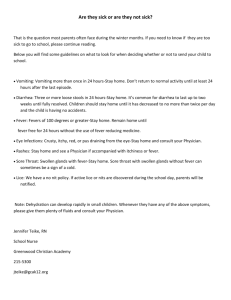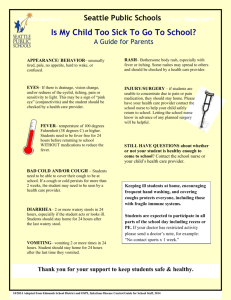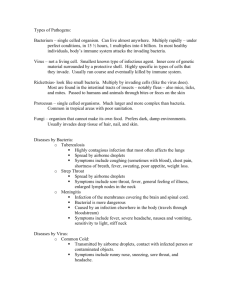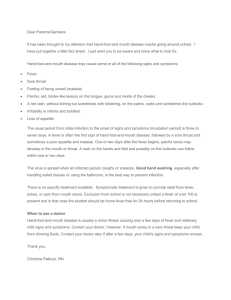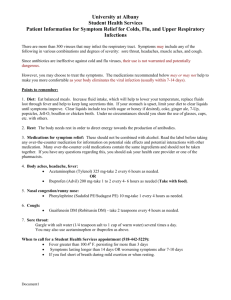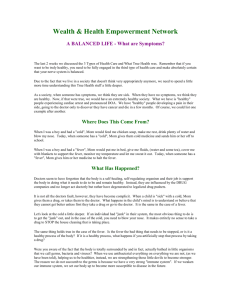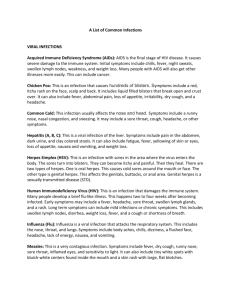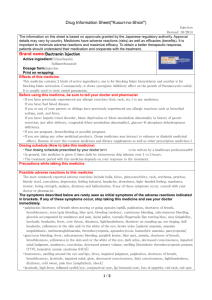Notes
advertisement
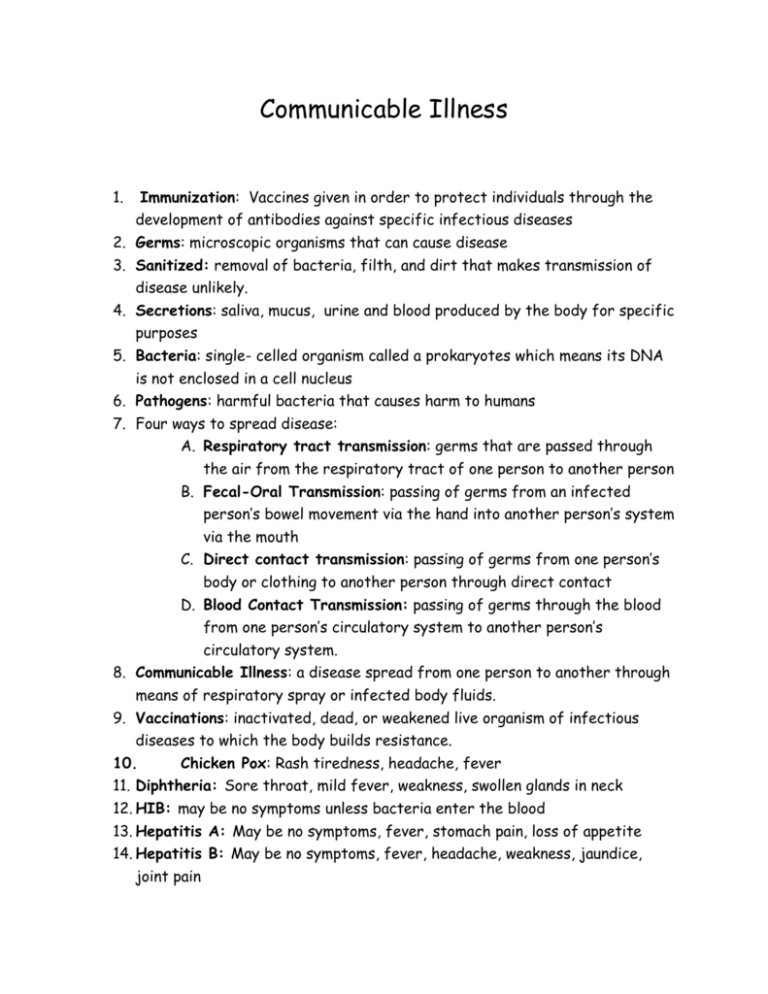
Communicable Illness 1. Immunization: Vaccines given in order to protect individuals through the development of antibodies against specific infectious diseases 2. Germs: microscopic organisms that can cause disease 3. Sanitized: removal of bacteria, filth, and dirt that makes transmission of disease unlikely. 4. Secretions: saliva, mucus, urine and blood produced by the body for specific purposes 5. Bacteria: single- celled organism called a prokaryotes which means its DNA is not enclosed in a cell nucleus 6. Pathogens: harmful bacteria that causes harm to humans 7. Four ways to spread disease: A. Respiratory tract transmission: germs that are passed through the air from the respiratory tract of one person to another person B. Fecal-Oral Transmission: passing of germs from an infected person’s bowel movement via the hand into another person’s system via the mouth C. Direct contact transmission: passing of germs from one person’s body or clothing to another person through direct contact D. Blood Contact Transmission: passing of germs through the blood from one person’s circulatory system to another person’s circulatory system. 8. Communicable Illness: a disease spread from one person to another through means of respiratory spray or infected body fluids. 9. Vaccinations: inactivated, dead, or weakened live organism of infectious diseases to which the body builds resistance. 10. Chicken Pox: Rash tiredness, headache, fever 11. Diphtheria: Sore throat, mild fever, weakness, swollen glands in neck 12. HIB: may be no symptoms unless bacteria enter the blood 13. Hepatitis A: May be no symptoms, fever, stomach pain, loss of appetite 14. Hepatitis B: May be no symptoms, fever, headache, weakness, jaundice, joint pain 15. Flu: Fever, Muscle pain, sore throat, cough, extreme fatigue 16. Measles : Rash, fever, cough, runny nose, pinkeye 17. Mumps: swollen salivary glands (under jaw), fever, headache, tiredness, muscle pain 18. Pertussis: Severe cough, runny nose, apnea(a pause in breathing in infants) 19. Polio: May be no symptoms, sore throat, fever, nausea, and headache 20. Pneumococcal: maybe no symptoms, pneumonia (infection in the lungs) 21. Rotavirus: Diarrhea, fever, vomiting, 22. Rubella: rash, fever, swollen lymph nodes 23. Tetanus: stiffness of neck, abdominal muscles, difficulty swallowing, muscle spasms, fever 24.
